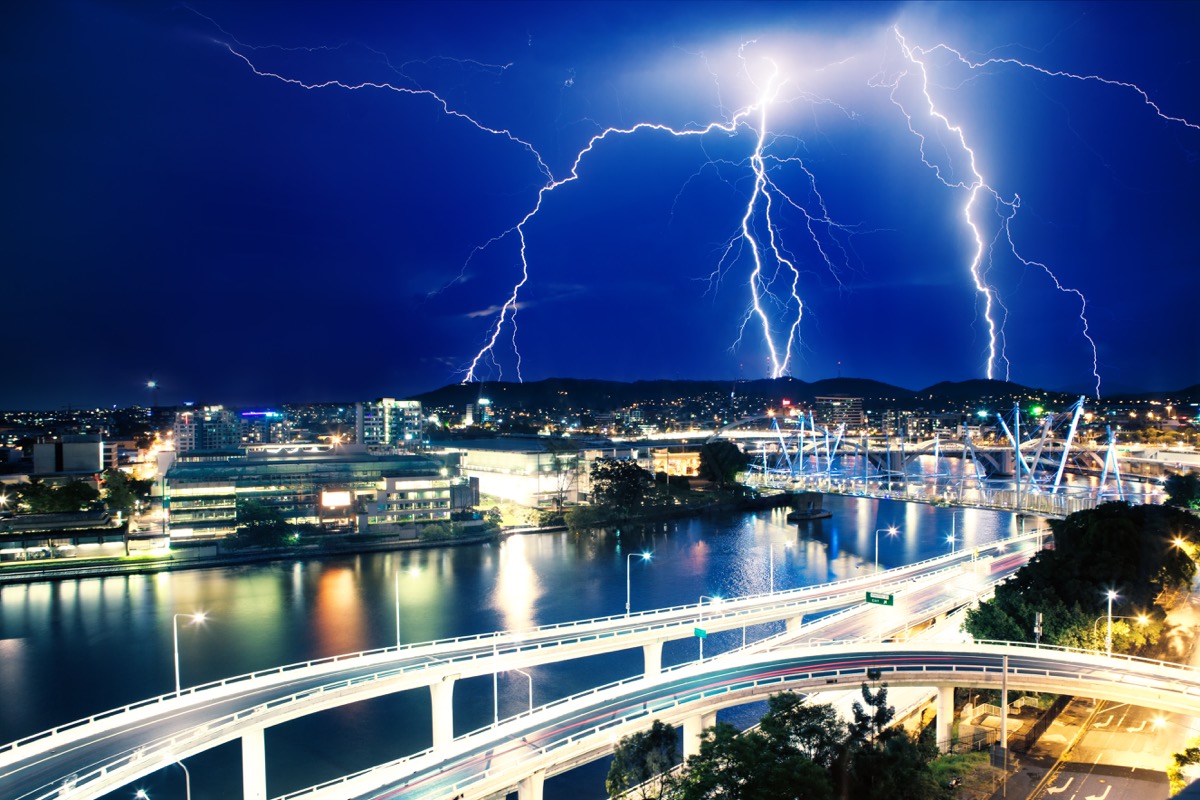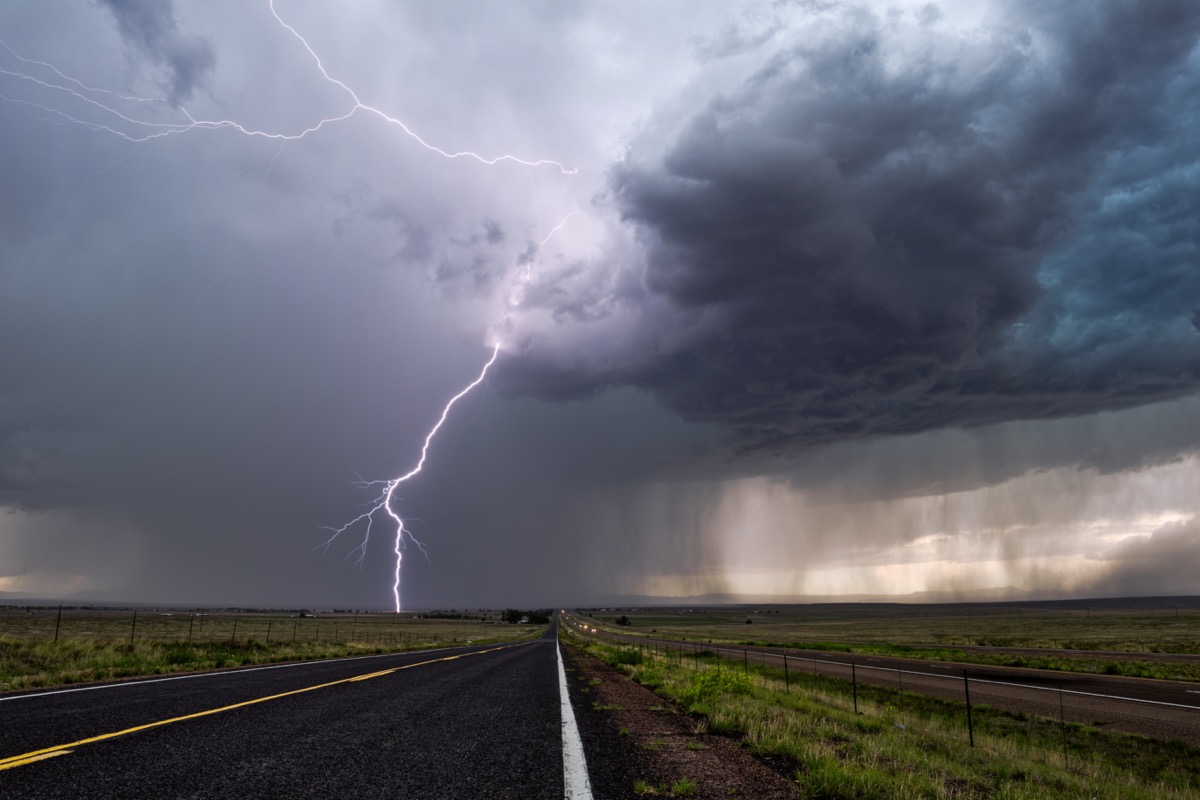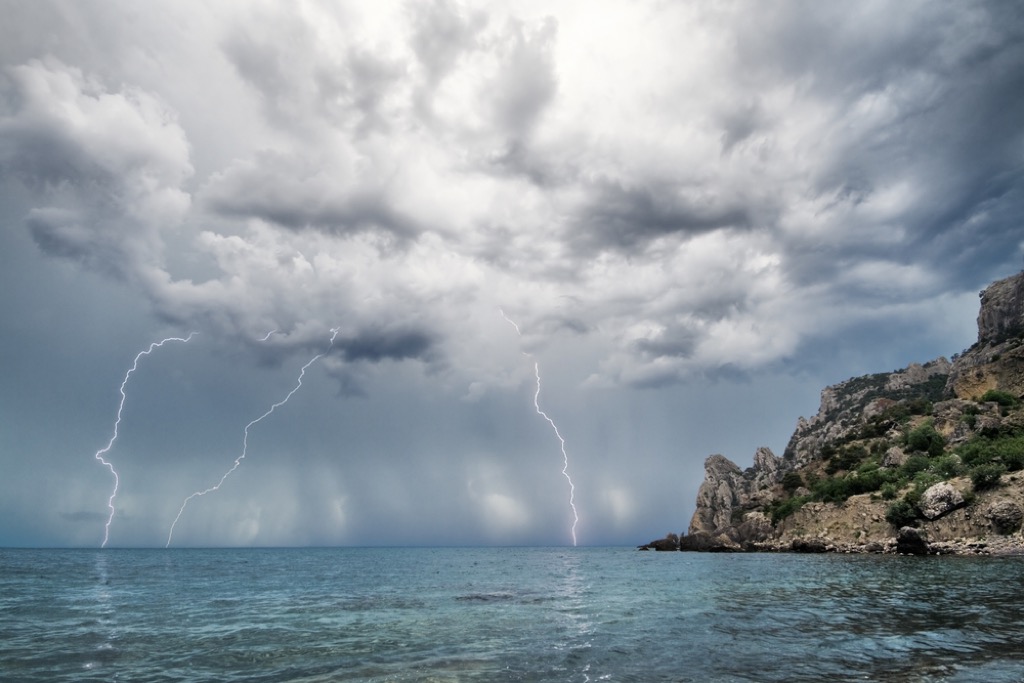“Words fail to capture the grief, sadness, anger, and shock that his family, his friends, and this church are feeling after such a freak accident,” the couple’s church told the Fort Myers News-Press. Just days before the Jeromes’ fatal lightning strike, 17-year-old William “Walker” Bethune was vacationing on Marco Island in Florida and was also struck by lightning. On July 28, he too died from his injuries. While lightning strikes are not common, they’re also not as rare as you might think—and they’re likely only increasing. Read on to find out where you might be particularly vulnerable to lightning, and why these incidences are becoming more frequent.
The Centers for Disease Control and Prevention (CDC) calls Florida the “lightning capital of the country” because it’s the state with the most lightning-related deaths in the U.S. In fact, the corridor from Tampa Bay to Titusville was dubbed “Lightning Alley” by the National Weather Service (NWS) because it experiences more lightning than anywhere else in the country. According to CDC data, 20 people died from lightning strikes in Florida in 2019, and in 2020, 17 people experienced the same fate. The high number of deaths may be in part because of the state’s hundreds of miles of beaches—where many lightning fatalities occur—which offer little in the way of shelter when a thunderstorm kicks off. Additionally, “people in Central Florida who spend a large portion of their lives outdoors (e.g. construction workers, park rangers, golfers, campers, etc.) are much more likely to be struck,” the NWS notes. Floridians and visitors to the state worried about lightning should be especially vigilant in July, which is when the state sees the most storms. RELATED: 85 Percent of People Killed by Lightning Have This in Common. While Florida has the most lightning-related fatalities, it doesn’t see the most lightning. That honor goes to Texas. In 2019, Texas experienced more than 16 million lightning strikes, while Kansas saw 8 million, Nebraska experienced 6 million, and Oklahoma also saw 6 million, according to the NWS. Florida came in fifth, seeing around 5.2 million lightning strikes in 2019. Regardless of which state you live in, there are some things you can do to be safe during a lightning and thunderstorm. The NWS recommends that you follow the mantra “when thunder roars, go indoors.” To be extra safe, stay inside for an additional 30 minutes after you hear the last thunder peel. RELATED: If You Live in These States, Never Go in the Ocean When It’s Calm. Lightning is a leading cause of weather-related fatalities in the U.S. From 2009 to 2018, the country averaged 27 reported lightning-related deaths per year, the NWS reports. And in 2016 alone, there were a staggering 40 deaths from lightning. The overwhelming majority of lightning deaths—85 percent—are among men, and it’s most often young, active people who are struck, according to the NWS. So far in 2021, there have been five lightning fatalities. Being struck by lightning isn’t as uncommon as you might think, either. Per the NWS, one death occurs for every 345,000 flashes, and one injury occurs for every 114,000 flashes. And for more helpful tips delivered right to your inbox, sign up for our daily newsletter. ae0fcc31ae342fd3a1346ebb1f342fcb Scientists say climate change plays a big role in the amount of lightning storms we’re experiencing. India, in particular, has seen a deadly increase in lightning storms as its temperatures continue to rise. The country of 1.3 billion people is now the world’s third-largest producer of carbon emissions, The Washington Post reports. In July, 65 people died over one weekend due to lightning storms in the northern Indian states of Rajasthan and Uttar Pradesh, according to CNN. Researchers from the University of California, Berkeley, and the State University of New York in Albany found a 12 percent increase in lightning activity for every 1 degree Celsius (about 1.8 degrees Fahrenheit) of warming the Earth experiences. They published their findings in the journal Science in 2014. For background, Earth has seen an increase of between 0.15 to 0.20 degrees Celsius per decade since the 1970s, according to temperature analysis conducted by NASA’s Goddard Institute for Space Studies. A study published in Geophysical Research Letters in March 2021 also established a link between climate change and rising incidences of lightning. The number of lightning strikes recorded during 2010 in the Arctic region rose from under 40,000 to more than 240,000 by 2020, the researchers found. That’s a startling 500 percent increase. RELATED: If You See This While Driving, Never Turn Around, CDC Says.



